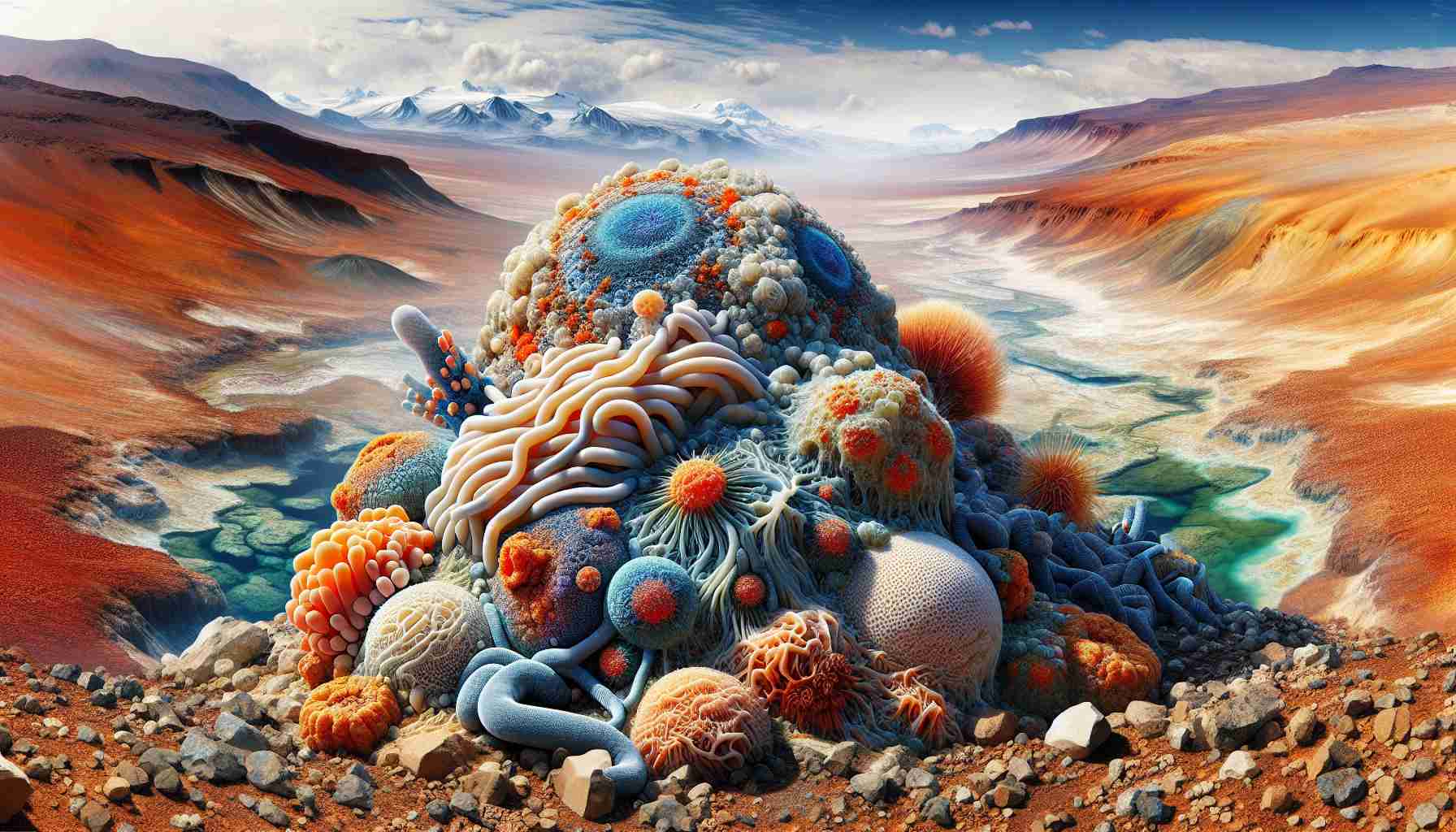In the mysterious depths of the ocean, a team of scientists has unearthed a hidden world thriving beneath the seafloor. This astonishing discovery challenges the traditional understanding of life surrounding hydrothermal vents and opens doors to the possibility of life beyond our planet.
Utilizing the advanced technology of the remotely operated vehicle SuBastian, researchers delved into the subseafloor realm, revealing a community of macroscopic organisms navigating through undersea cavities. Among these creatures were tubeworms, mussels, polychaete worms, and limpets, coexisting in the dark depths below the ocean’s surface.
By drilling small holes into igneous rock and lifting sections of lava shelves, the team uncovered the spectacular existence of these organisms, sustained by bacteria nestled within their bodies. The cavities housing these beings provided a hospitable environment, enabling their survival in the extreme conditions of the deep sea.
The implications of this discovery extend beyond Earth, igniting discussions on the potential for life elsewhere in the universe. By studying Earth’s most extreme environments, scientists hope to unravel the essential factors that support life and apply this knowledge to planetary exploration.
The team’s groundbreaking findings underscore the urgent need to protect these precious ecosystems from potential threats like deep-sea mining. As humanity ventures into the unknown, the revelations from Earth’s depths serve as a beacon of hope, revealing the resilience and adaptability of life in the face of adversity.
Additional Facts:
– Extremophiles are organisms capable of thriving in extreme conditions such as high temperatures, acidity, or pressure. They can be found in various environments on Earth, including geysers, ice caps, and acidic lakes.
– Some extremophiles have unique adaptations that allow them to survive, such as heat-resistant enzymes or protective cell membranes.
– Astrobiologists study extremophiles to understand the potential for life on other planets, as these organisms provide insights into the limits of life’s adaptability.
– Extremophiles have applications in biotechnology, where their enzymes and molecules are used in industrial processes due to their stability in harsh conditions.
Key Questions:
1. What mechanisms do extremophiles use to survive in extreme environments?
2. What can extremophiles teach us about the origins of life and the potential for life in outer space?
3. How can extremophiles be harnessed for biotechnological advancements?
Key Challenges:
1. Understanding the limits of life’s adaptability and the boundaries of habitability in extreme environments.
2. Protecting extremophile habitats from anthropogenic activities and climate change.
3. Addressing ethical concerns related to the potential exploitation of extremophiles for commercial purposes.
Advantages and Disadvantages:
– Advantages: Extremophiles provide valuable insights into the diversity and resilience of life, offer potential solutions for biotechnological challenges, and inform astrobiological research.
– Disadvantages: Overexploitation of extremophile habitats may disrupt fragile ecosystems, and ethical dilemmas may arise regarding the commercial use of extremophiles.
Related Links:
– NASA – National Aeronautics and Space Administration
– NASA Astrobiology
– NSF – National Science Foundation



